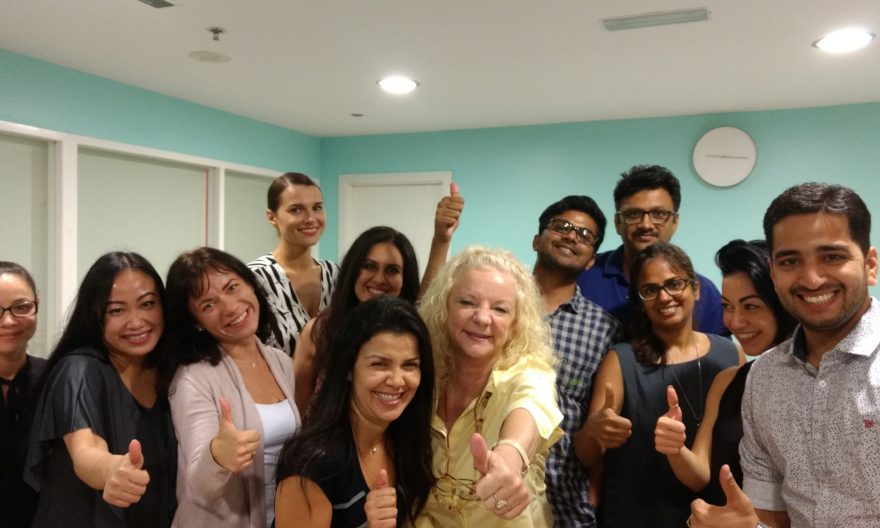
In former days people did not like to admit that they are engaging in counseling or coaching because asking for help meant that something must be wrong with you. In today’s world coaching is more and more not only acknowledged but in demand. Asking for help is recognized as a great trait in today’s leadership. A director, executive, VP or AVP asking for help now a days is interpreted as the leader being open and ready to grow. Everyone knows that four or six eyes see more than two. In most businesses and corporates considering other’s opinions, initiating feedback and incorporating various different inputs equals expanding one’s horizon and being flexible. There are always more messages than one. It is part of a leader’s skill set to include all involved ones. In fact the 360 degree leadership evaluation scores this ability highly.
A coach can be like a friend on your side to either open new vistas for business ideas, guide to higher performance for leadership, teams or in sports. A coach can help you facilitate solutions for family conflicts; solve inner worry and emotional problems. Really a coach can help you with any topic in your life or profession, even more so coaching is associated with thriving for excellence.
Within the domain of inquiring assistance to reach greater excellence, it is important to understand the difference between a consultant and a coach. Typically a consultant is often looked at as an expert or master in a given field. He is meant to give you advice, tell you what to do and not to do. A coach knows how to ask the questions that bring forth your own answers. A coach is not giving you advice but just facilitating your own solutions. In many coaching fields the focus is on talking, talking it out, talking about, talking therapy.
Neuro-Linguistic Programming brings an interesting perspective into the field of coaching. It says talking is not enough but suggest mulit-sensory keys for actualizing change. Talking happens on the auditory (hearing, speaking) level, whereas mulit-sensory keys include visual elements (empowering inner pictures/movies) and the physical element of moving, touching, gesturing and actively doing something which means new behaviors coded in the body.
The difference between consulting and coaching shows that following someone else’s guidelines as in consulting is not as effective as “creating your own neuro-pathways” as in coaching. Answering a question can be looked at as producing thought for change. Producing thought for change means your brain while formulating already re-organizes. Through this process of pattern reorganization change is already manifested more powerfully then the process of following an instruction. Following an instruction uses less brain activity. Creating an answer is already a step toward change.
Neuro-Linguistic Programming enriches coaching through advanced tools and techniques to efficiently and long-lastingly create, implement and manifest change. Rather than just lengthy processes to identify problems like psychology, counseling and therapy do, NLP techniques identify patterns that don’t work in a cut to the chase and fast way only in order to superimpose them through patterns that work. This is called re-imprinting or re-programming.
NLP is exquisite with its focus on language. 13 Specific questions help you to bring forth the information that is needed and clarify a context or statement. These tools are nearly magical in making the difference of individual perception and facts closer to measurable reality. Another set of more than 14 patterns help to initiate creative thought processes that bring forth answers and solutions from the subconscious. Another 16 patterns are specifically designed to change limiting attitudes and beliefs. Within one sentence you can empower someone’s stuck state and engage thought and emotion for greater health and wealth. These masterful language tools are what politicians, lawyers and high-level professionals use to negotiate, meditate and win their points successfully.. They are called “patterns for persuasion”.
I invite you to notice that language begins by you talking to yourself. If you talk yourself into a frenzy – your thought and emotions have you and you do not have them. We need to learn how to apply language to change your self-talk. These language tools empower you to persuade yourself for greater development and change. On that premises then you will improve any conversation, personal to professional interactions into sophisticated communications.



